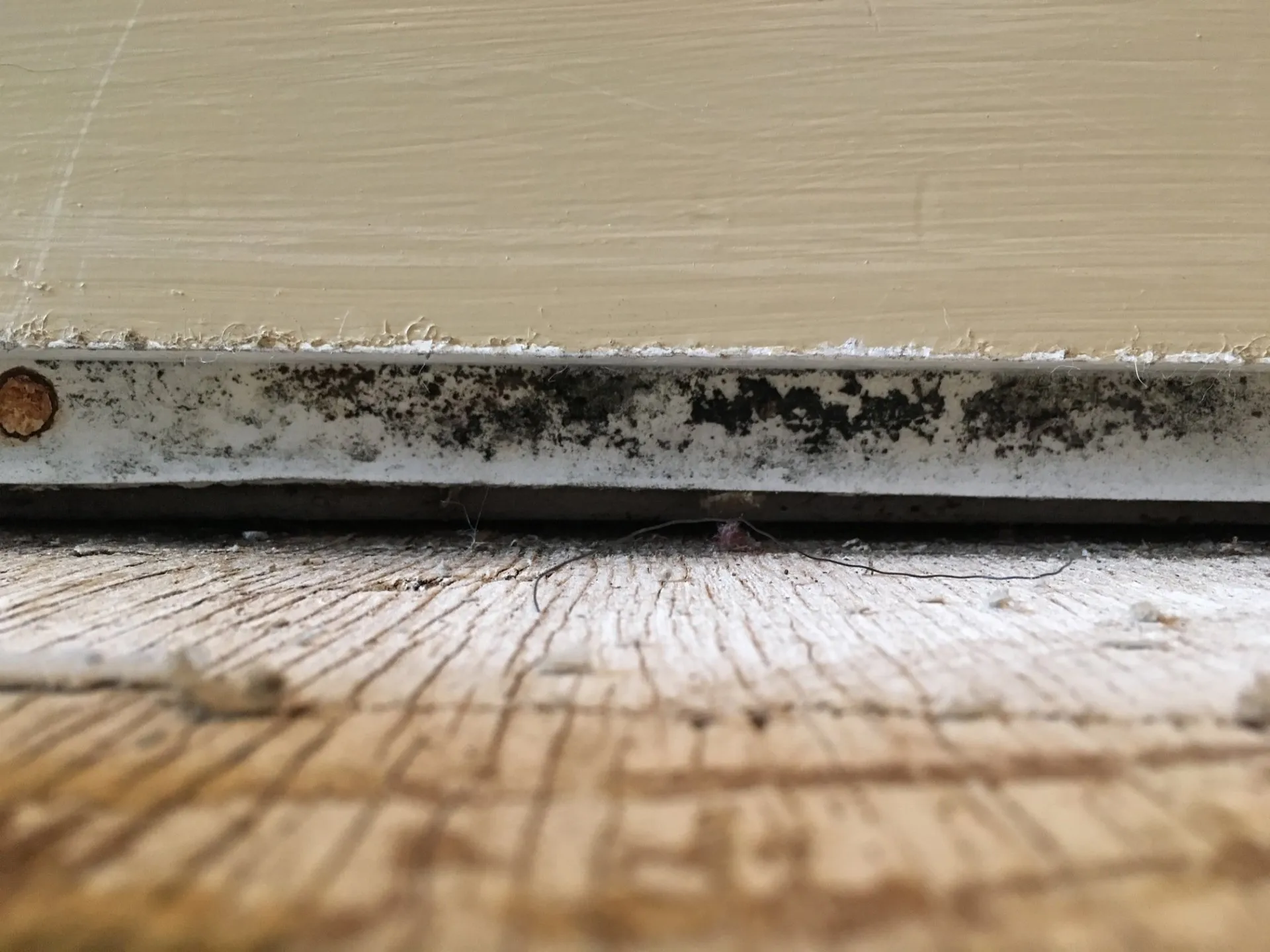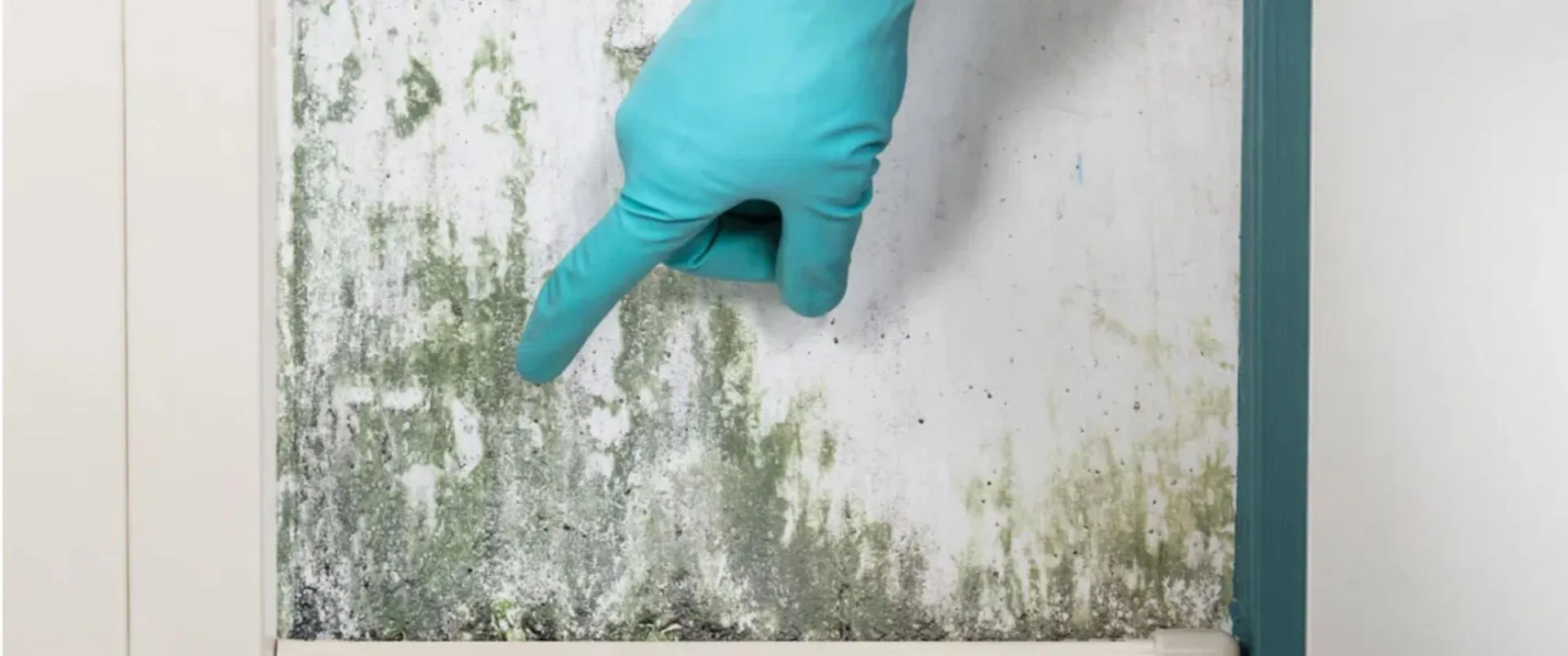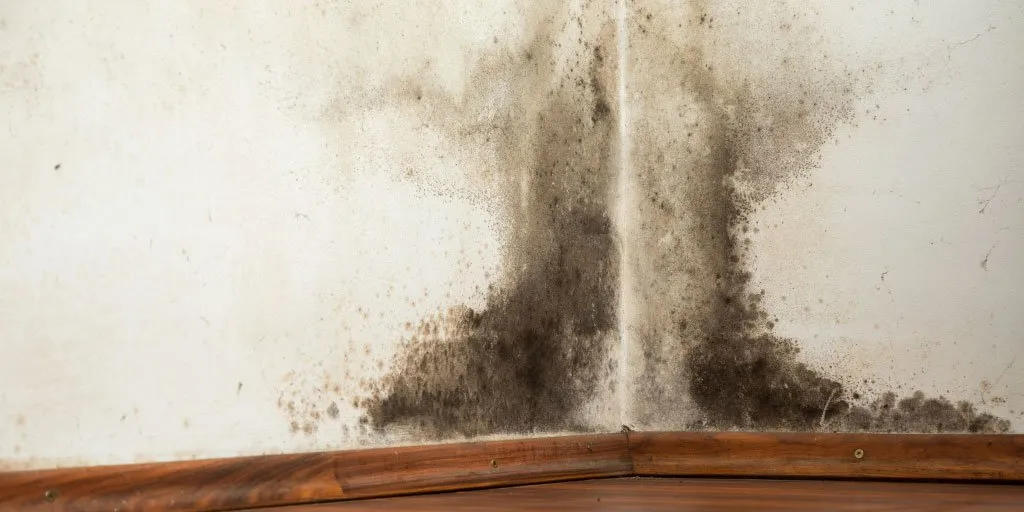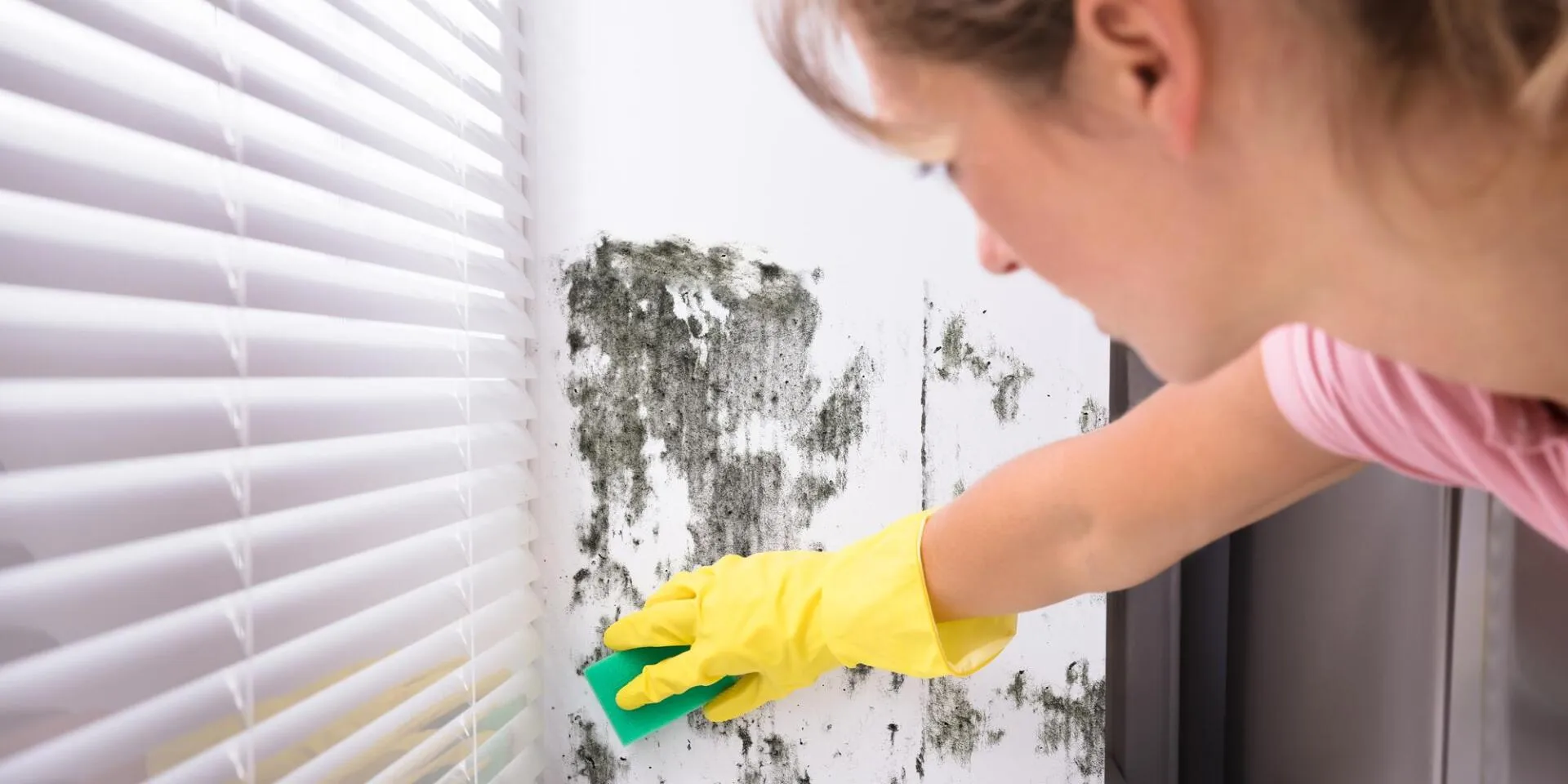
Are you worried because you’ve spotted white patches on your building walls and floors? It might be hard to tell whether you’re dealing with efflorescence or white mold because both occur in damp environments. While they may look similar, they have very different causes. Efflorescence is not dangerous but signals moisture problems that might lead to mold, harming health and the structural stability of your home. Knowing how to tell them apart is important so you can keep your home in good shape and maintain a healthy environment.
What is Efflorescence?
Efflorescence is formed when salts leave a white, powdery deposit on the surface of materials like concrete, brick, and stone. It occurs when water carrying dissolved salts evaporates, leaving the salt residue behind. While generally harmless, efflorescence can be aesthetically displeasing and may indicate moisture issues. It’s a common phenomenon affecting interior and exterior surfaces in buildings.
What Does Efflorescence Look Like?
Efflorescence typically appears as a white or grayish powdery coating on surfaces. Depending on the amount of salt present and the rate of evaporation, it often looks like a chalky residue or a thin, crusty layer. Sometimes, it might resemble a faint white haze on the affected area.
Causes of Efflorescence
Efflorescence occurs when specific conditions align. Here are the five main conditions that contribute to its formation.
Soluble Salts
The salt content in building materials is the root cause of efflorescence. These salts exist in many building materials, including bricks, mortar, and surrounding soil. Water moving through masonry dissolves these salts. When the water dries, it leaves salt deposits on the surface. The amount of salt present affects how noticeable the efflorescence is.
Improper Drainage
Poor water control often leads to efflorescence. When rain or groundwater isn’t directed away from buildings, it soaks into the masonry. This extra moisture carries more salt to the surface. Good drainage systems help keep masonry dry, reducing the chance of efflorescence forming.
Moisture & Low temperature
Moisture availability and temperature greatly influence efflorescence. Damp conditions provide more water to move the salts through the walls. Cold weather slows drying, giving salts more time to collect on the surfaces of foundation walls. Efflorescence is more common in areas with high humidity or frequent rain, especially during cooler months.
Groundwater
Underground water can cause efflorescence even without rain. This mineral-rich water moves up through foundation walls naturally if the water table is high. It’s why you might see white patches several feet above the ground on buildings. Structures without good moisture barriers are more likely to have this issue.
Condensation
In humid spaces like kitchens, bathrooms, or crawl spaces, warm air can form water droplets on cool walls. This moisture then picks up salts in the masonry and brings them to the surface. Good ventilation and insulation help prevent this internal source of efflorescence.
Where Does Efflorescence Grow?
Efflorescence often occurs right where water comes into contact with certain building materials. It can enter through small cracks in foundations or walls. Sometimes, it forms when moist air touches cool surfaces. Rainwater soaking into bricks or concrete can also cause efflorescence. Even high indoor humidity can lead to its formation.
Here are the main places where you’re likely to find efflorescence growing:
Efflorescence in Basements
You’ll often see efflorescence on basement walls, looking like a dusty white coating. Efflorescence on basement floors is also common, especially in damp areas. This happens because basements are surrounded by moist soil. Water seeps through the walls and floors, carrying dissolved minerals with it. When this water evaporates, it leaves those minerals behind as a powdery residue on basement walls or floors.
Efflorescence on Brick Surfaces
You’ll notice efflorescence on brick as a pale, crusty layer on the surface. It’s most common on brick walls exposed to harsh weather conditions. Rain soaks into the bricks, causing salts to dissolve. As the bricks dry out, these salts come to the surface. The result is a patchy white coating that stands out, especially on red bricks.
Efflorescence on Concrete Surfaces
Concrete is highly prone to efflorescence. You might spot efflorescence on concrete floors in your garage or basement. Efflorescence in concrete walls is also a frequent occurrence. Even outdoor concrete slabs, like driveways, can develop a white, hazy appearance. This happens because concrete is highly porous. Water moves through these pores, carrying dissolved minerals. When the water evaporates at the surface, it leaves these minerals behind as concrete efflorescence.
Efflorescence in Grout
Tile grout is another common place where efflorescence forms. Grout efflorescence appears as a white powder along the lines between tiles. It forms when water penetrates the porous grout material. This water dissolves minerals as it moves through the grout. Later, when the water evaporates at the surface, these minerals are left behind, creating white lines between your tiles.
Efflorescence on Pavers
Outdoor pavers can also be affected by efflorescence. You might notice efflorescence in pavers as a white haze on your patio or driveway. Paver efflorescence is more noticeable on dark-colored stones. It occurs when moisture from the ground or rain seeps into the pavers and then evaporates, leaving salt residue behind on the surface.
Efflorescence on Wood
While less common, wood can also develop efflorescence. You might observe efflorescence on wood furniture in damp rooms, and it can also occur on wood beams in buildings with moisture problems.
What is White Mold?
White mold refers to various fungal species that appear white or light-colored. These types of molds thrive in damp, humid environments and can grow on many materials. Some common types include Penicillium, Aspergillus, and Cladosporium, which may start white but can change color over time. White mold can cause health issues and damage to buildings if not addressed, so early identification and professional mold remediation are crucial.
What Does White Mold Look Like?
White mold typically appears as fuzzy or powdery patches on affected surfaces. Depending on the species and environmental conditions, its texture can range from fluffy and cotton-like to slimy or web-like. While primarily white, it may have subtle tints of gray, green, or yellow, especially as it matures or interacts with the surface it’s growing on.
Causes of White Mold
White mold thrives under specific conditions that are common in many buildings. Here are the main factors that contribute to white mold development:
Water Damage
Excess moisture is the main trigger for white mold. Leaky pipes, roof damage, or flooding create wet spots where mold thrives. Even small, hidden leaks can cause big problems over time. Mold spores spread throughout the air, so even if mold starts in your basement or crawl space, it may show up in other parts of your home.
Poor Ventilation
Without good air circulation, moisture gets trapped, especially in basements or crawl spaces. Stagnant air allows water vapor to settle on surfaces, creating damp areas. These wet spots become perfect places for mold to grow. Good airflow, on the other hand, helps dry out spaces quickly and keep humidity levels steady, making it harder for mold to thrive.
Organic Materials
Mold needs food to grow, just like any living thing. It finds this food in many common materials, such as wood, paper, and fabric. These materials contain cellulose, which mold can break down and use for energy. When these materials get wet, mold has the food it needs to thrive.
Moist Environment
High humidity in the air provides enough moisture for mold to grow, even without visible water. In damp environments, surfaces often feel wet or clammy. This thin layer of moisture is all mold needs to start growing. Basements and bathrooms often have this problem because they are more humid than other areas.
Where Does White Mold Grow
Here are some common places where white mold is frequently found:
White Mold on Furniture
White mold on wood furniture often appears in damp rooms with poor air circulation. It can grow under beds or on furniture in basements where moisture levels are high. It will look like fuzzy white patches on the wooden surfaces. White mold on furniture causes damage by feeding on the wood. To prevent white mold from growing on furniture, keep it dry and make sure that those rooms have good ventilation. Regular cleaning and inspection can help catch white mold on furniture early.
White Mold on Clothing & Textiles
White mold can grow on fabrics that stay damp for too long. It appears as powdery spots on fabric, especially on natural fibers like cotton. Damp closets or piles of wet laundry create perfect conditions for mold growth. Even fabric pots for plants can develop white mold if they are constantly wet. To avoid white mold on fabric, dry clothes thoroughly and store them in well-ventilated areas. If you have water-damaged carpets, get rid of them or dry them thoroughly.
White Mold in Crawlspaces
White mold in crawl spaces is common due to their dark, damp conditions. Water can enter through ground moisture or foundation cracks, creating an ideal environment for mold. The wood in crawlspaces provides food for the mold to thrive. White mold in crawlspaces may look like fuzzy patches on wood or walls. To prevent white mold, fix water leaks, and improve ventilation in the crawlspace.
Efflorescence Vs. White Mold: The Main Differences
Efflorescence is caused by salt deposits, while white mold is a living fungus. Both can appear in damp areas, but the two have distinct differences.
Let’s explore how to tell the difference between efflorescence and white mold.
- Appearance: Efflorescence looks like a white, powdery substance. It often appears crystalline or chalky. White mold has a fuzzy or slimy texture and may have an uneven, patchy look.
- Composition: Efflorescence consists of mineral salts, usually calcium carbonate. White mold is a living fungus that grows and spreads in damp conditions.
- Cause: Water movement through materials causes efflorescence, leaving behind mineral deposits as it evaporates. White mold grows because of excess moisture and feeds on organic materials.
- Health effects: Efflorescence doesn’t harm human health. It’s just a sign of water movement. White mold can cause breathing problems and allergic reactions in some people.
- Smell: Efflorescence has no odor. White mold often smells musty or damp. This smell can help you tell the difference between efflorescence and white mold.
The main difference between efflorescence and white mold is their composition and health impact. Properly identifying whether the white substance in your home is efflorescence or mold can help you address moisture issues and mold growth correctly. To identify which is which, try a simple water test. Sprinkle some water on the white patches. While efflorescence will dissolve quickly, mold will not be affected by water. Mold usually has a musty smell, but efflorescence doesn’t smell at all. Overall, efflorescence is just mineral buildup and isn’t harmful. Mold, however, can cause health issues like allergies, breathing problems, and even lung problems if you don’t deal with it.
In both cases, finding the source of moisture is key. For efflorescence, that might mean better waterproofing or interior drainage in your basement or crawl space. For white mold, you’ll need to fix leaks, improve ventilation, or reduce humidity to stop it from returning.
Keep Your Home Healthy
If you think you might be dealing with mold, it’s important to address it right away. At Lamunyon Mold, we specialize in identifying and addressing mold growth. Our experts can inspect the area, determine the presence of mold, and provide effective solutions. Give your house the care it deserves-contact Lamunyon Mold for a check-up today.




